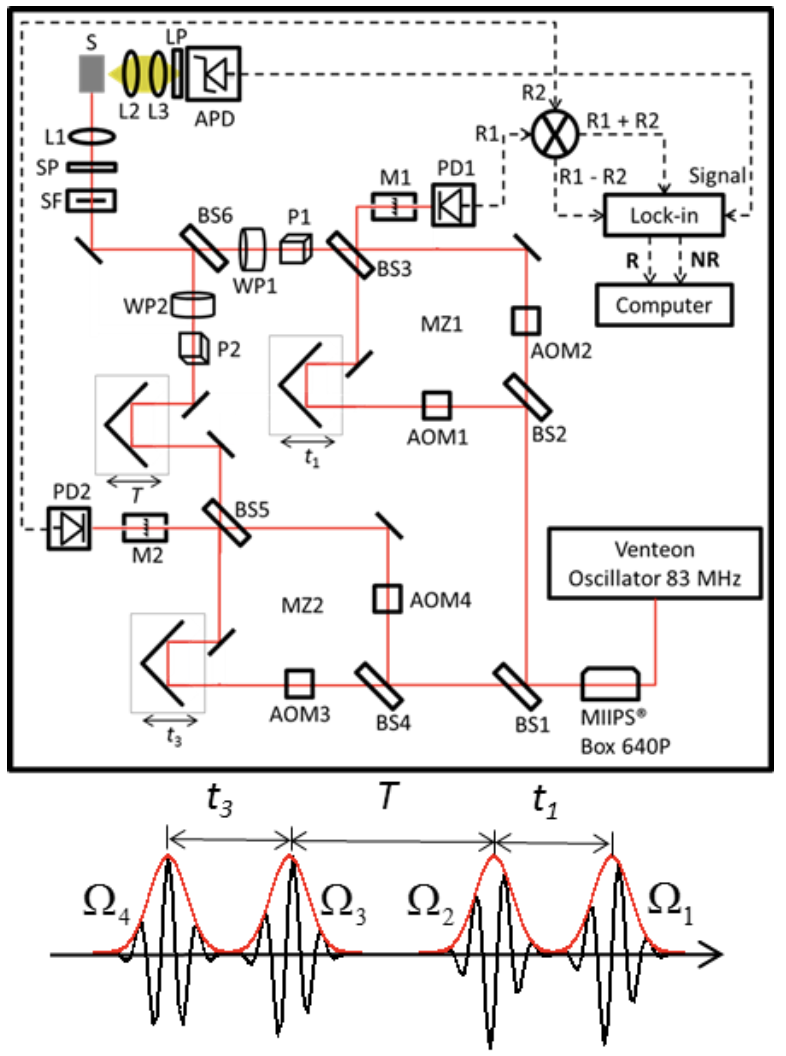Arkaprabha Konar, Riley Sechrist, Yin Song, Veronica R. Policht, Philip D. Laible, David F. Bocian, Dewey Holten, Christine Kirmaier, and Jennifer P. Ogilvie
The bacterial reaction center (BRC) serves as an important model system for understanding the charge separation processes in photosynthesis. Knowledge of the electronic structure of the BRC is critical for understanding its charge separation mechanism. While it is well-accepted that the “special pair” pigments are strongly coupled, the degree of coupling among other BRC pigments has been thought to be relatively weak. Here we study the W(M250)V mutant BRC by two-color two-dimensional electronic spectroscopy to correlate changes in the Qx region with excitation of the Qy transitions. The resulting Qy–Qx cross-peaks provide a sensitive measure of the electronic interactions throughout the BRC pigment network and complement one-color 2D studies in which such interactions are often obscured by energy transfer and excited-state absorption signals. Our observations should motivate the refinement of electronic structure models of the BRC to facilitate improved understanding of the charge separation mechanism.











